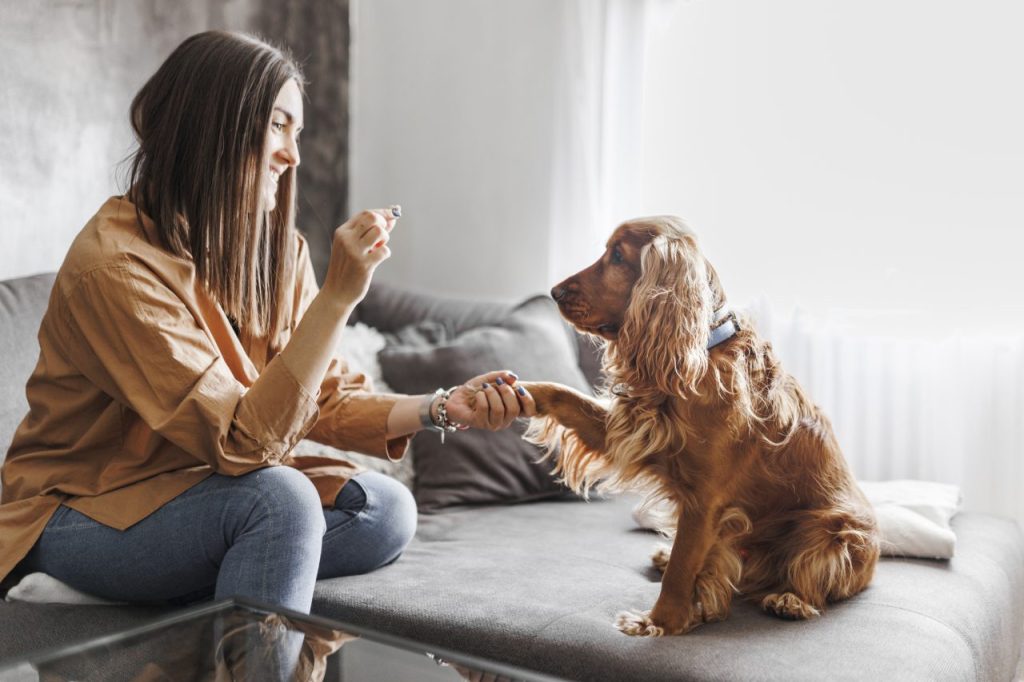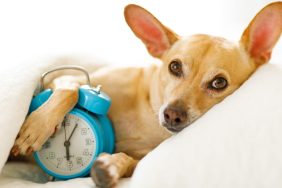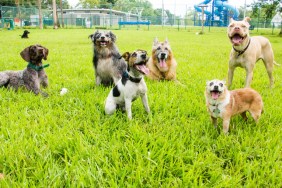Positive and negative reinforcement have become buzzwords for animal behaviorists. But, they are also concepts that you can use as a dog parent to help your pup develop into a well-behaved canine companion. Positive reinforcement is something your dog perceives as pleasant that occurs during, or immediately following, a behavior. The positive reinforcement makes that particular behavior more likely to occur again. For example, your dog lies down at your feet, you say “good dog,” and your dog’s tail begins thumping. They have been positively reinforced with praise for lying at your feet.
Confusion exists over the difference between positive reinforcement and rewards. Here’s an easy way to distinguish them: rewards come after a behavior, whereas reinforcement comes during, or so closely following a behavior, that the dog feels almost as if it happened during the behavior.
For example, if you ask your dog to “sit” and they comply, and you say “Good dog, you can have a cookie,” and you trot off to the kitchen to get a dog cookie from the jar on the counter, then the cookie is your dog’s reward.
On the other hand, if you have treats already in hand, you ask your dog to sit, they do so, you say, “Yes!” and you reveal the treat, then you have positively reinforced the behavior.
If you’re working on “down” and “stay” commands, and while the dog remains down you give them soothing praise and drop small treats to them, that will positively reinforce the behavior of staying down because you let them know they are doing the right thing while they are still in position.
Using positive reinforcement and rewards
Most dogs work extremely well with a combination of positive reinforcement and rewards. Keep in mind that not all dogs are motivated by food. In that case, you can use a combination of treats, praise, touch, or a favorite toy or game your pet enjoys. Get to know your dog to find out what they like best.
When you use treats, be sure to remember to give praise before the treat. That way, your dog associates the praise with food, ensuring that they will eventually work for praise alone. Even if their primary motivator is food, it’s still important to praise your dog. You may not always have food handy but your voice is always available.
Training treats should be small, which for an average size dog would be about the size of a Cheerio. Use something soft and easy to eat in one bite. Otherwise, the treat might break, fall in pieces to the floor, and the dog will end up “vacuuming” instead of watching you. Carry treats in your pocket, a fanny pack, or a carpenter’s apron tied around your waist before training sessions.
Negative doesn’t mean bad
What about negative reinforcement? The word negative implies that something bad is happening, but negative reinforcement is more about “pressure.” When training around distractions, apply pressure, then release it the instant the dog performs the appropriate behavior.
An example would be a Gentle Leader head halter, or a Good Dog plastic training collar, which applies pressure if the dog pulls, but is released the moment the dog is walking in the right place. It is self-correcting, so the dog does not necessarily perceive the negative as being applied by the owner but instead can associate that they, the dog, are in control of the collar.
Postive + negative = results
Both positive and negative reinforcement are useful training tools. Ideally, a dog learns the correct behavior through positive reinforcement. Then, after the behavior is learned, a dog parent may use negative reinforcement if necessary to teach the dog to comply even under distracting conditions.
Almost all living beings need a balance of positive and negative reinforcement if they are going to perform a behavior reliably in distracting conditions. Sure, we human beings work well for positive reinforcement (praise from the boss) and rewards (paychecks!). But how many of us would continue to work if there were absolutely no consequences for not coming to work?
Dogs are no different. In fact, most dogs are like a toddler who would choose candy for dinner and play over a bath. However, you can strengthen your bond with your dog by understanding and using appropriate reinforcement principles.




